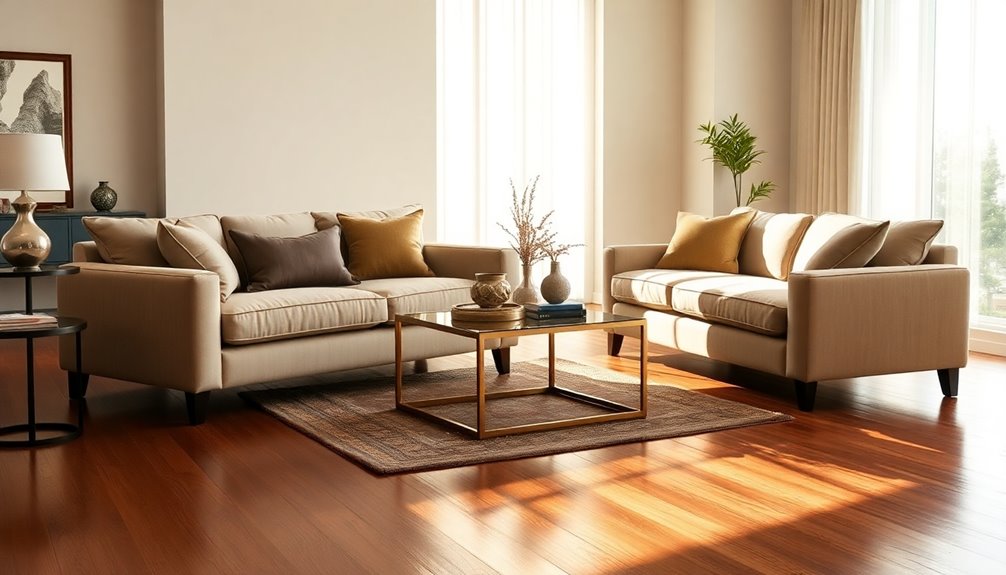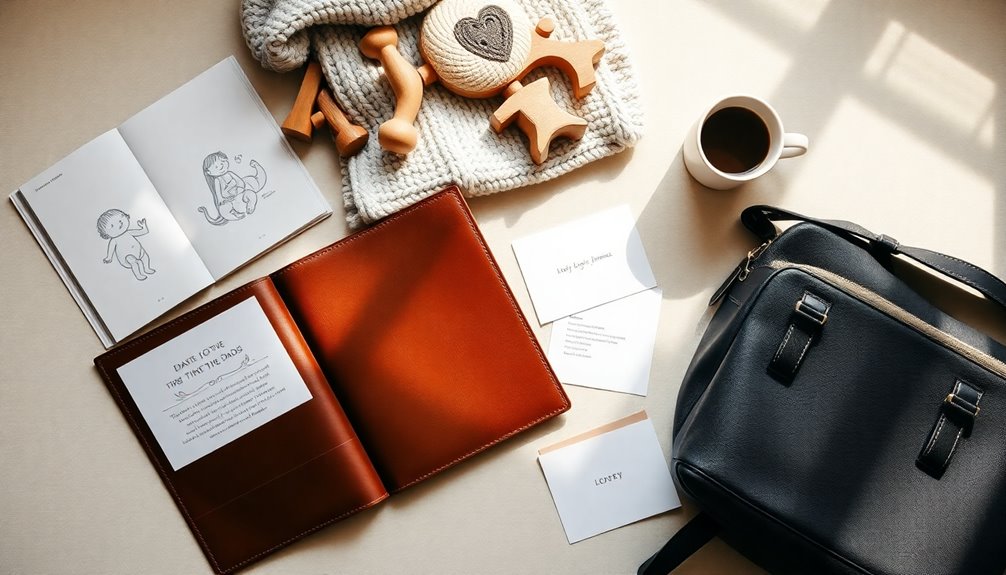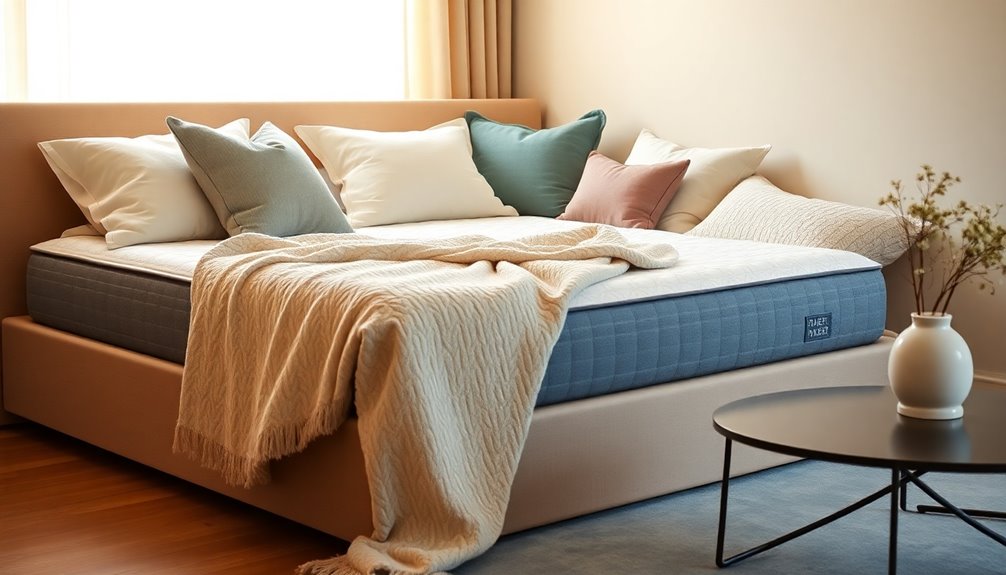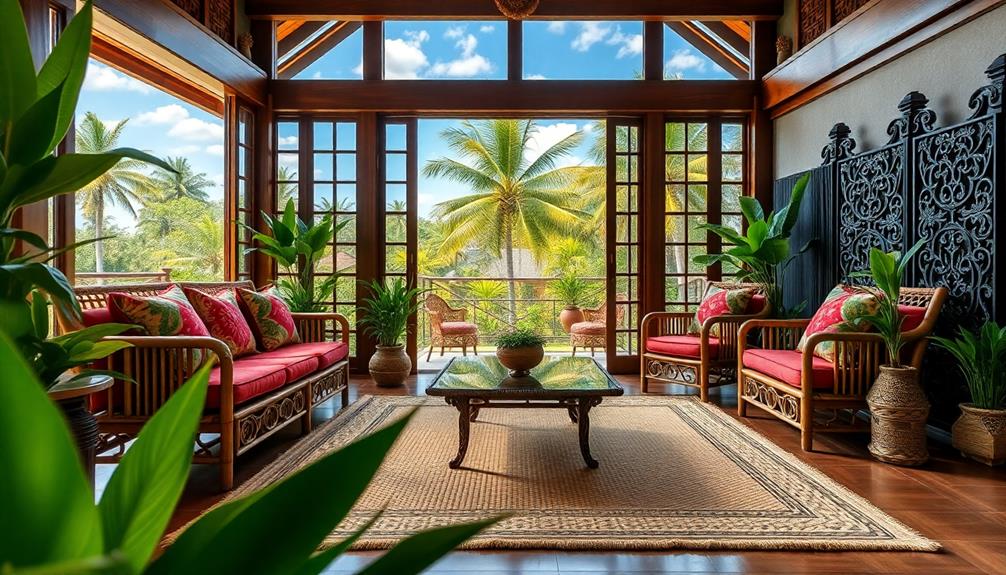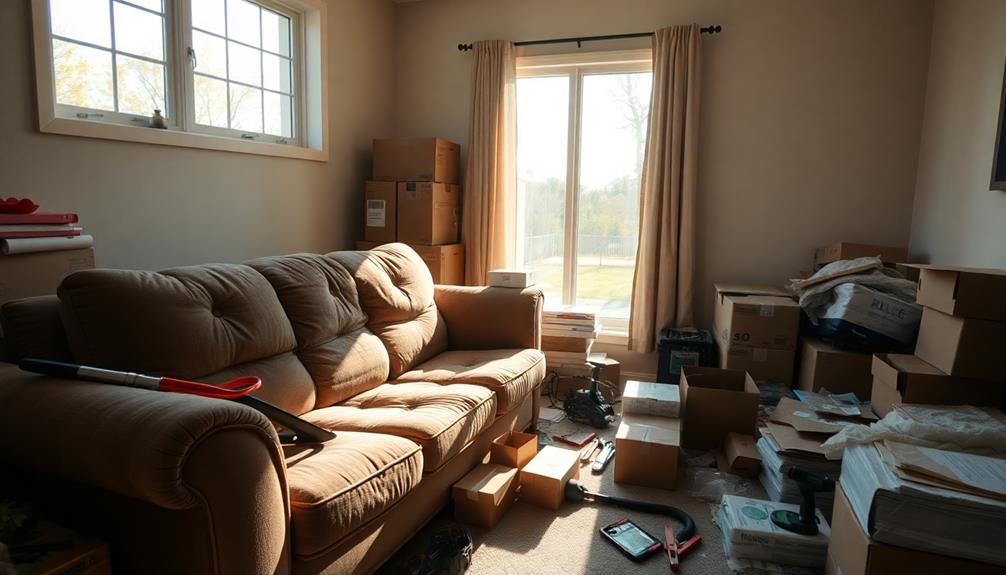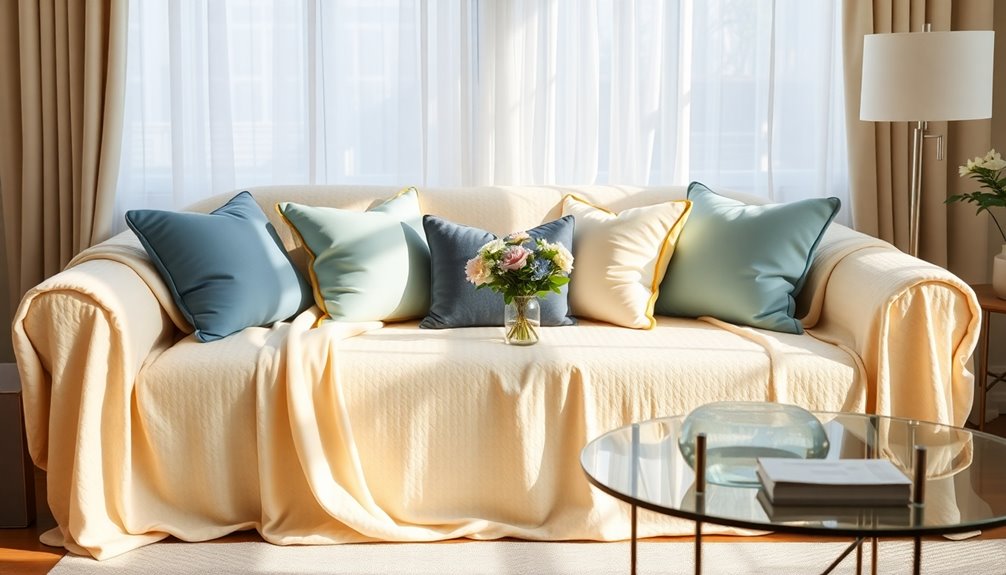To find furniture dupes, start by using online tools like Google Images and specialty sites such as Dupe. com. These platforms help you compare styles and prices, showcasing affordable alternatives that mimic high-end designs. Social media, especially Instagram and TikTok, is a goldmine for trendy recommendations. Don’t forget to check local retailers like Target or online marketplaces like Wayfair for budget-friendly options. Always assess quality and materials to ensure durability. By getting savvy with your searching techniques, you’ll discover many great options, and there’s plenty more to explore if you keep looking. Additionally, when considering furniture choices, it’s wise to also think about how you’ll manage logistics, especially if you’re purchasing larger items. For instance, if you’re eyeing a bulkier piece, you might want to look up how to disassemble a recliner sofa to ensure that it fits through doorways and into your living space with ease. Ultimately, being informed and resourceful will help you make the best purchasing decisions while maximizing your budget.
Key Takeaways
- Utilize image search tools like Google Images and Google Lens to find visually similar furniture items at lower prices.
- Explore social media platforms like Instagram and TikTok for user-recommended furniture dupes using trending hashtags.
- Compare prices using websites like Dupe.com and Spoken.io to identify the best deals on similar furniture styles.
- Research customer reviews and blogs to assess the quality and durability of potential furniture dupes before making a purchase.
- Consider local retailers and online marketplaces like Wayfair and IKEA for budget-friendly alternatives to high-end furniture designs.
Understanding Furniture Dupes
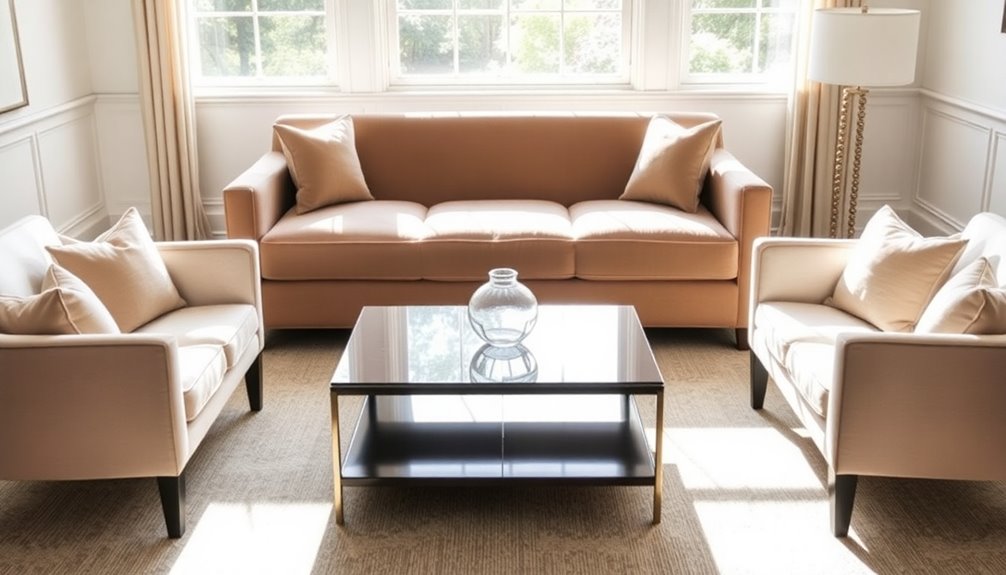
Understanding furniture dupes can transform your shopping experience by making stylish designs more accessible. A furniture dupe is a product that closely imitates the design and aesthetic of a more expensive item, allowing you to achieve high-end looks without breaking the bank. These alternatives cater to those who want stylish furniture but either can't afford the originals or prefer not to spend a fortune.
When exploring dupes, remember they vary in quality, materials, and price. You'll find some that closely resemble the luxury item, while others may differ significantly. It's essential to consider the appearance, cost, and quality of the dupe. Look for pieces that mimic the original design, but keep in mind that cheaper materials might affect durability. Some dupes may even exceed the quality of the originals, so it's worthwhile to do thorough research before making a purchase.
You should also check reviews to gauge the quality and performance of potential dupes. Understanding the difference between dupes and white-labeled furniture is crucial, as dupes offer independent alternatives rather than slight variations of the same product. By being informed, you can make smart purchasing decisions and enjoy fashionable furniture without overspending.
Online Search Techniques
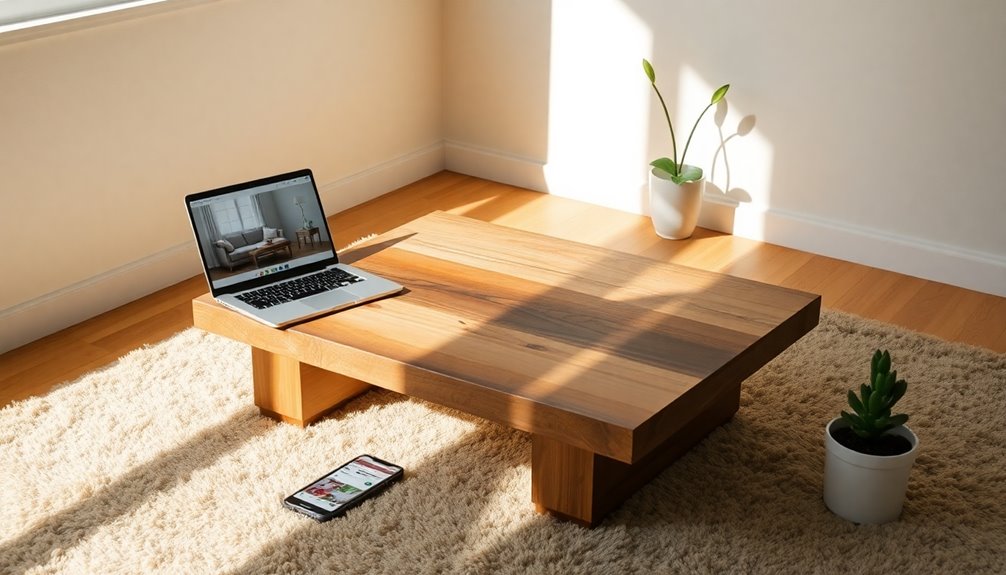
Finding the right furniture dupes can be a game-changer in your quest for stylish home decor. Start by utilizing online image searches. Tools like Google Images let you upload a photo of the furniture you desire, helping you find visually similar items. You can also use Spoken's Search by Image feature to discover duplicate furniture pieces across various retailers. Just upload images from magazines or Instagram to kick off your search.
Another effective technique is using URLs and product links. Simply copy and paste the URL of your desired item into Spoken's Search by URL feature. This will scan multiple retailers for similar, more affordable alternatives, allowing you to compare prices and styles with ease. Dupes may vary in materials and craftsmanship, affecting quality and durability, which is an important consideration when exploring options.
Don't forget the power of social media and blogs. Follow influencers on platforms like Instagram and TikTok, and use hashtags like #affordablefurniture to uncover budget-friendly options. Engage with online communities to share and discover user-recommended dupes.
Finally, utilize comparison shopping tools to find and compare prices across various retailers, ensuring you snag the best deals available. Happy hunting!
Recommended Tools and Websites
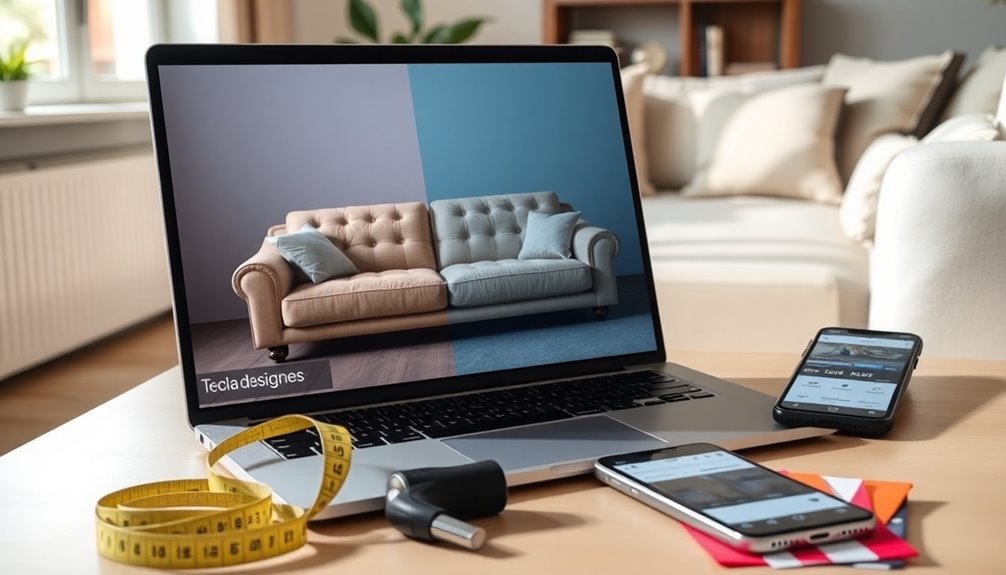
When it comes to discovering furniture dupes, a variety of dedicated tools and websites can simplify your search. Start with Dupe.com, where you can modify the URL of your desired item to find visually similar replicas at a fraction of the cost. Spoken.io lets you search by image or URL, helping you compare prices and styles across multiple retailers. Additionally, employing a growth mindset can enhance your ability to find creative alternatives that fit your budget.
For a broader scope, check out Houzz, featuring articles on high-end dupes, or use Google Lens to upload images and find similar items online. When browsing, consider using Spoken's browser extension to snag the best deals effortlessly. This reflects the growing trend of dupe culture, where consumers seek affordable alternatives to luxury items.
Social media is also invaluable. On Instagram and TikTok, follow influencers who showcase affordable furniture alternatives using hashtags like #furnituredupes. Pinterest is perfect for discovering and saving dupes shared by others.
Lastly, don't forget comparison tools like Google Shopping, PriceGrabber, and Shopzilla, which help you find the best prices. By utilizing these resources, you'll make your hunt for stylish yet affordable furniture much more manageable.
Best Shopping Platforms
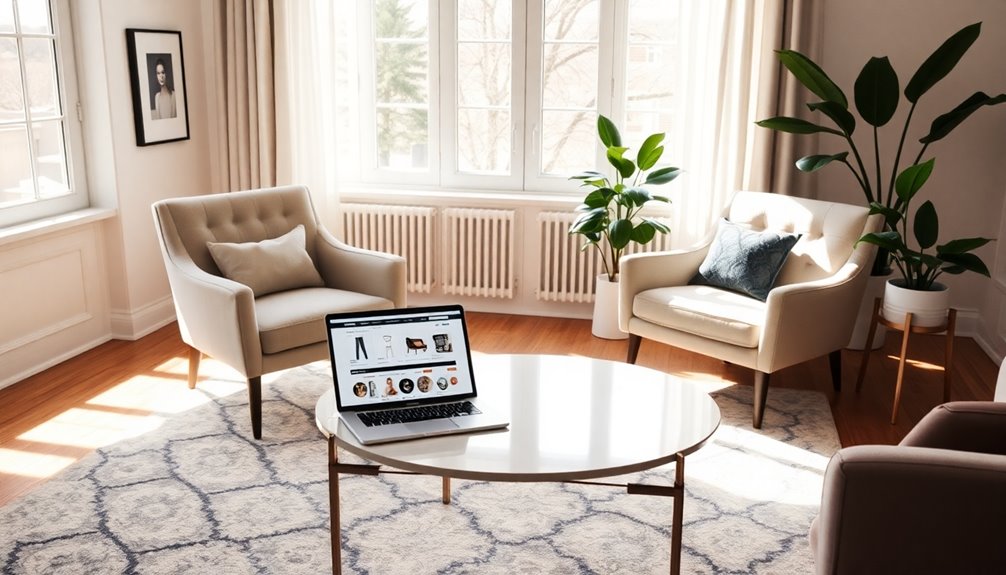
As you explore tools and websites for discovering furniture dupes, knowing where to shop is just as important. Online marketplaces like Wayfair and Overstock provide a vast selection of affordable alternatives to high-end pieces. AllModern specializes in modern dupes, while Amazon offers competitive pricing and customer reviews for a variety of options. Don't overlook IKEA, which is famous for its budget-friendly furniture that can mimic pricier designs. Utilizing reverse image search can also help you find similar products based on shape, color, and style.
Social media platforms are invaluable too. On Instagram and TikTok, influencers showcase trendy dupes with hashtags like #furnituredupes, making it easy to find inspiration. Pinterest is another great resource for discovering and saving images of dupes.
Dedicated furniture websites like Spoken, Google Shopping, and PriceGrabber help you compare prices and find visually similar alternatives. Retail stores, especially big box chains like Target, often carry budget-friendly versions of high-end furniture. Local stores can also surprise you with unique finds.
Key Factors to Consider
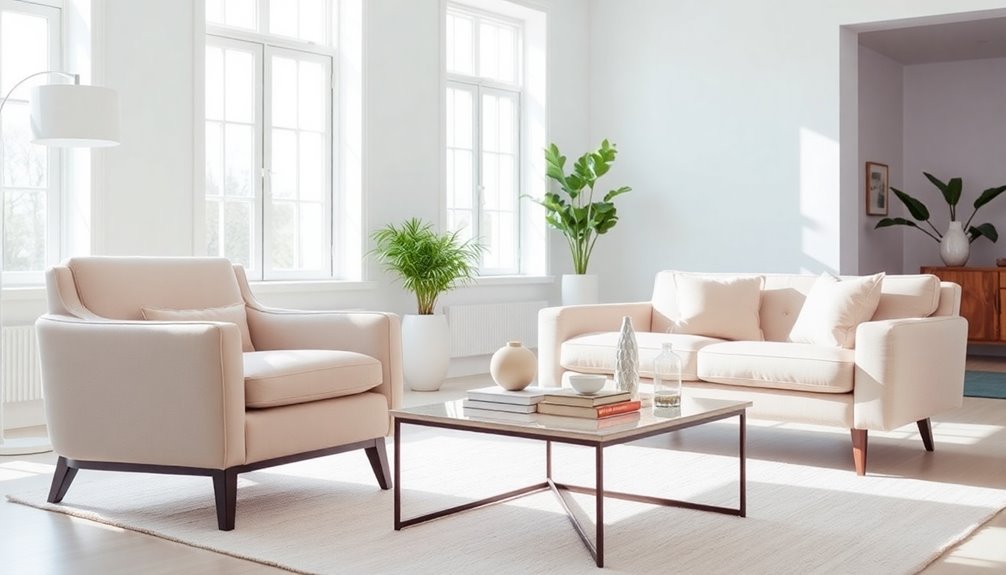
Considering key factors is essential for successfully finding furniture dupes that not only look great but also fit your budget and quality standards. Start with the appearance; ensure the materials and colors closely match the original piece. Check photos and read reviews to confirm that the dupe aligns with your desired aesthetic and design style.
Next, evaluate the cost. Compare prices across various retailers to uncover the best deal, but be wary of lower prices that may compromise quality. Use price comparison tools like Spoken or Google Shopping to make informed decisions.
Quality is another critical factor. Investigate the materials, such as solid wood or durable fabrics, and review the construction methods used. Look for signs of quality like smooth finishes and solid metal hardware, as authentic products often feature superior quality and durability that ensure longevity.
Finally, conduct thorough research and verification. Utilize online image searches and dedicated dupe blogs for recommendations. Check social media for user reviews and consider ordering samples to ensure the piece meets your expectations in color and texture. By focusing on these key factors, you'll be well-equipped to find beautiful, budget-friendly furniture dupes.
Dupes vs. White-Labeled Furniture
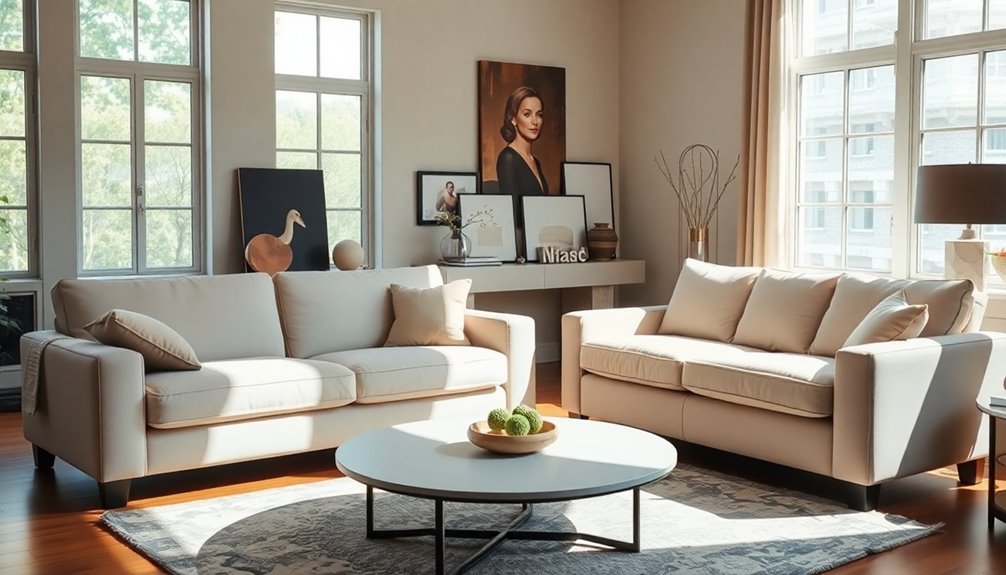
Navigating the world of furniture shopping can be overwhelming, especially when distinguishing between dupes and white-labeled furniture. Dupes are designed to mimic the look and feel of more expensive items, offering similar styles at lower price points. While they aren't identical copies, they may vary in materials and craftsmanship. You can find dupes through image searches, social media, or dedicated websites.
On the other hand, white-labeled furniture consists of identical items sold under different brand names. These products maintain consistent quality, regardless of the retailer. With over 71% of furniture being white-labeled, it's common to see the same item priced differently at various stores. This means you can save significantly by comparing prices.
To find dupes, look for user recommendations on platforms like Instagram and Pinterest, and check blogs for expert tips. For white-labeled furniture, utilize price comparison tools and pay attention to product details to ensure you're getting the same item. Understanding these differences will help you make informed decisions, allowing you to furnish your space without breaking the bank.
Popular Dupes to Explore
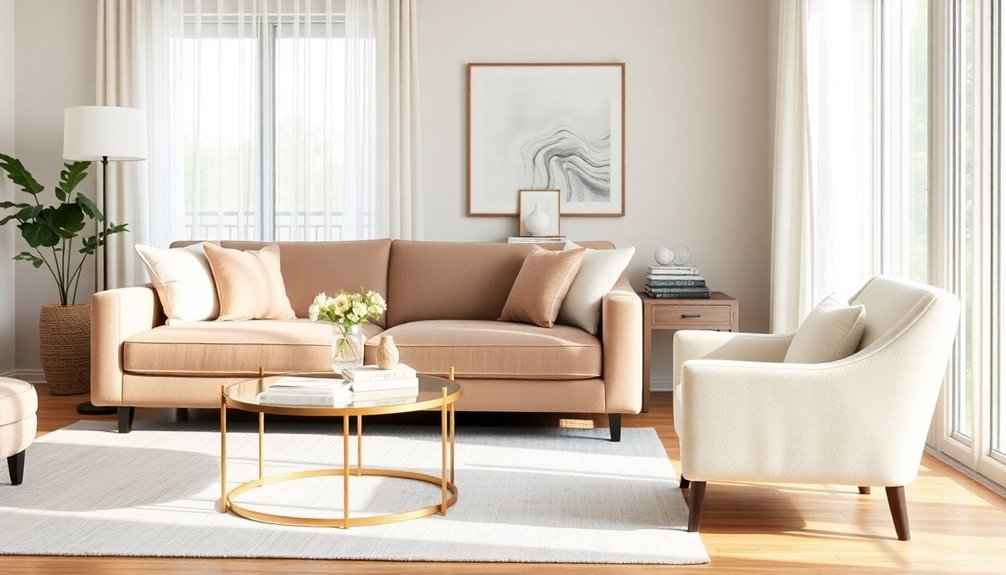
Finding the right furniture dupe can elevate your space without emptying your wallet. If you're on the hunt for stylish yet affordable options, start with Amazon. You can find a wide range of dupes, from the Eames Lounge Chair to the Arco Floor Lamp, all at significantly lower prices. Plus, customer reviews and photos help you make informed choices. Amazon offers a variety of chic furniture pieces at competitive prices, making it an excellent starting point for your search.
Another great platform is Spoken, which offers unique features like Search by Image and Search by URL. Here, you can upload images or paste links to find similar items, ensuring you snag the best deals across multiple retailers. Their browser extension is a handy tool for discovering dupes.
Don't overlook Google Images or other search tools, as they let you upload photos to find visually similar pieces. Sites like dupe.for provide affordable alternatives, while Google Lens can assist in identifying cheaper versions of specific items.
Finally, dive into social media platforms like TikTok, Instagram, and Pinterest. By following hashtags like #affordablefurniture, you'll uncover trending dupes and budget-friendly finds recommended by influencers and fellow users.
Tips for Smart Shopping
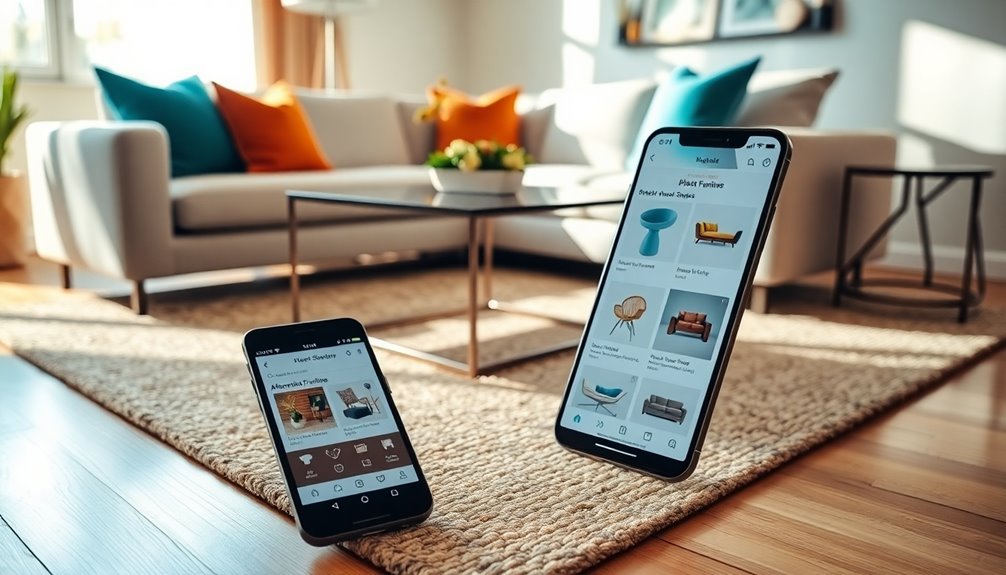
Smart shopping involves setting a realistic budget and sticking to it, ensuring you can make the most of your furniture investments. Start by determining the maximum amount you're willing to spend on each piece. Prioritize essential items to avoid impulse buying, and remember to factor in long-term value and durability. Adjust your budget based on sales, promotions, and clearance events to make your money stretch further.
Next, research and compare prices before making a purchase. Use online comparison websites and apps to find the best deals, and don't hesitate to visit multiple stores both online and in-person. Tools like Google Images and Google Lens can help with visual searches to identify the best options. Additionally, consider using your budget as a guide for decision-making throughout the process to ensure you stay on track.
Explore alternative options as well. Check out secondhand furniture from thrift stores or online marketplaces for unique finds. Consider multi-functional furniture and timeless designs that can adapt to changing trends. Don't forget to negotiate prices, especially when buying multiple items or floor models, and inquire about price matching policies. Take advantage of loyalty programs and discounts on slightly damaged pieces for additional savings.
Frequently Asked Questions
Are Furniture Dupes Worth the Investment?
When considering if furniture dupes are worth the investment, you should weigh cost against quality. Dupes can save you money while still achieving a stylish look, but they might not always last as long as luxury pieces. Make sure you read reviews and check materials to ensure you're getting a good deal. If you're on a budget or experimenting with design, dupes can be a practical choice that fits your needs without breaking the bank.
How Do I Spot a High-Quality Dupe?
To spot a high-quality dupe, start by examining the materials used. Look for detailed photos that showcase color and texture, ensuring they match the original piece. Read reviews to gauge durability and craftsmanship, and check for any warranties. Compare prices across retailers to find the best value while keeping quality in mind. Finally, consider seeking recommendations from friends or experts to ensure you're making a well-informed choice.
Can I Return Furniture Dupes if Unsatisfied?
Yes, you can usually return furniture if you're unsatisfied, but it depends on the retailer's policies. Most have a 30-day return window, requiring items to be in as-new condition with original packaging. Keep in mind, return shipping fees may apply, and restocking fees could be deducted from your refund. Always check the specific return guidelines for the retailer before making a purchase to avoid any surprises later.
Do Dupes Have Warranties Like Original Furniture?
Dupes often don't have warranties like original furniture. You'll find that many duplicates come with shorter warranty periods, sometimes just a year or less. Coverage can be limited, focusing on specific defects or materials. Some retailers might offer in-house warranties, but these can vary widely. If you're considering dupes, always check the warranty details and compare them to the originals to ensure you know what protection you're getting.
Are There Eco-Friendly Dupes Available?
Yes, there are plenty of eco-friendly dupes available! You can find furniture made from sustainable materials like reclaimed wood, bamboo, and organic cotton. Check out online marketplaces or social media platforms for user-recommended options. Look for brands that prioritize sustainability, like Burrow or Greenington, and always verify certifications like FSC. By choosing these alternatives, you'll not only save money but also contribute to a healthier planet.
Conclusion
Finding furniture dupes can transform your space without breaking the bank. By using online search techniques and exploring recommended tools and websites, you can discover stylish alternatives that fit your budget. Remember to consider key factors like quality and style, and distinguish between dupes and white-labeled options. With smart shopping tips in mind, you're ready to uncover the perfect pieces that'll elevate your home décor while saving you money. Happy hunting!
